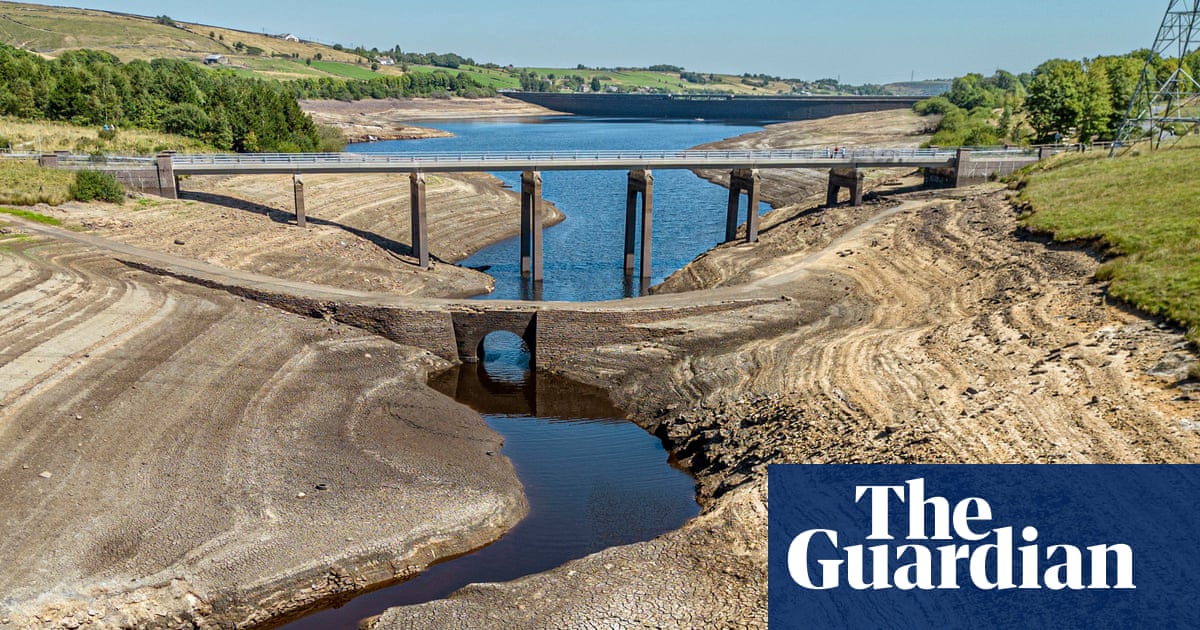sigh… a drought can’t be a pandemic because it’s not a disease. ffs, is there nobody literate in journalism anymore?
if drought is on the verge of becoming widespread and devastating, just say that.
Ok, Mr. Literal.
https://en.wikipedia.org/wiki/Literal_and_figurative_language
Words should matter though. The guy you responded too is correct. There is a very big difference in responses to pandemics vs drought. Both can cause upheaval, but that’s about where the similarities end.
even used figuratively, it’s bad writing for the reason i explained. this isn’t some high school essay; it’s a headline in a well-regarded, internationally-recognized newspaper. this should never have passed editorial muster. it’s sloppy.
Not to be pedantic, but I was totally thinking the same thing when I saw the article. I get the figurative thing but I also feel like these kind of headlines are just trying to pander to simple minded people.
I think better management and recharge of groundwater is the only way to weather the unpredictability climate change brings to precipitation. During winter floods it will be necessary to divert flows to areas where it can soak in to recharge aquifers and make it through the dry times. There simply isn’t enough space for surface storage to fill the gaps.
I think it’s important to note how much hardscape and channelling has been done to prevent widespread and sheet style flooding, and how they contribute to this problem of ground water recharge.
Most places that are flat enough to build are flat enough to build because of thousands of millenia of flooding, especially sheet flooding, laying down sediment and making them flat. Then humans get annoyed because the flat low places floos, so they build flood control.
There is a post further down about how Muni water really isn’t an issue and I agree with this. I’ve put up a couple posts explaining this on Reddit and hacker news. I could rehash it if some one was interested.
Some places the aquifer can be recharged relatively quickly. The problem is a lot of the major aquifers that are being depleted recharge on geological timeframes.
At natural rates, yes, though most of those are in very arid regions. But with human intervention some may recharge faster. In California there is a lot of research being done on this topic because we’ve already developed most of the reservoirs that were economical. Pumping water into farm fields at times when it won’t harm things, and pumping water into areas of sandy soil that connect to aquifers can greatly increase the amount of water that enters the ground instead of being channeled into rivers and the ocean.
Yeah, Newsom fast tracked some soak areas in like 5 counties through the Central Valley. It’s something at least. Seems like it would make a hell of a bigger difference to only grow water efficient crops in the area.
I think that may start to happen but it’s going to be gradual. That said I have no problem with irrigation if it’s from well managed, sustainable supplies of water and it’s produces enough food to justify its use. I think we’re moving in that direction though slower than I’d prefer.
Along those lines, I’m really curious why they haven’t installed floating solar down the aquaducts. Seems like it would be cheap and efficient.
I’m not familiar with this technology but it could be worth looking into! I guess the question is whether the reduction evaporation and land cost makes up for what I assume will be more expensive to install and maintain.
I’ve just watched a couple videos like this one: https://www.youtube.com/watch?v=IZXV2p73vcE and it sure seems like that canals would be a decent fit. The state wouldn’t have to deal with regulation issues (I think, I’m far from an expert) because the land is already working for the state.
Then again, I have fantastic ideas all the time, but they usually spring from a foundation of frightening ignorance of details.
I don’t think this is actually as bad as people say.
It’s not that we won’t have drinking water. Municipal water use is tiny! And provided with enough incentives (higher costs) people will use less water. And this can be done in very reasonable ways by issuing water tiered rates.
Agricultural water use, is a whole different topic. However, until we can incentives better water management on our massive agricultural lands, it’s only going to get worse.
I think the problem is that it will be almost impossible to change policies on water use that will change the economic outlook of so many people.
As expected of a beehaw user, the perfect liberal answer.
No need to watch fox news anymore, get all your propaganda from beehaw.
Beehaw has been popular for like a week. How can there be a typical user?
That’s rich coming from a tankie.
You didn’t say woke at least 7 times try again
I think Water Wars are also a concern.










